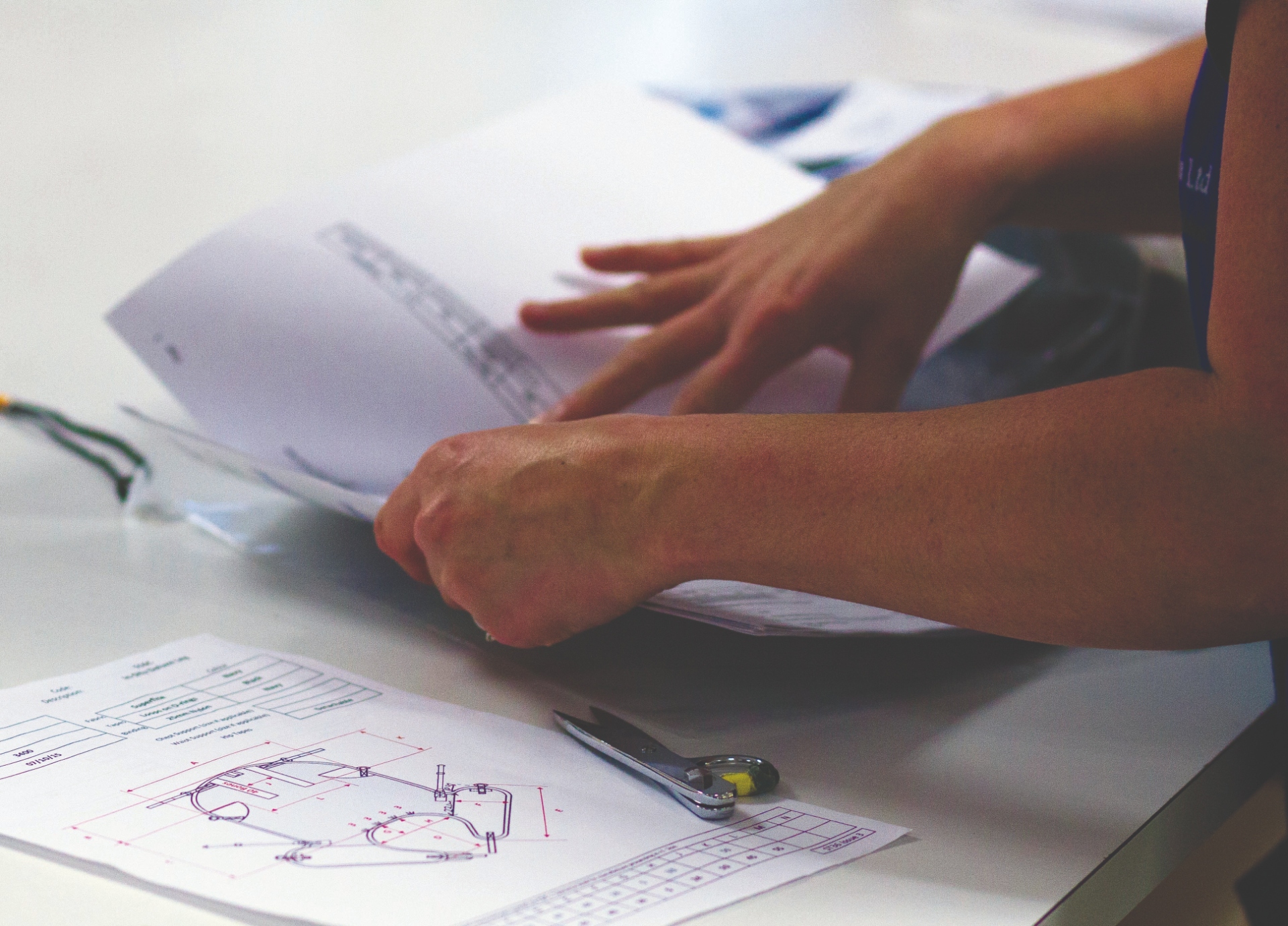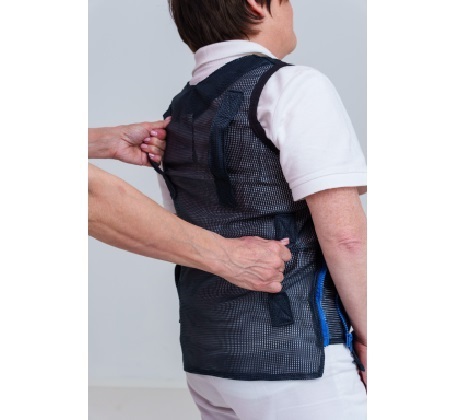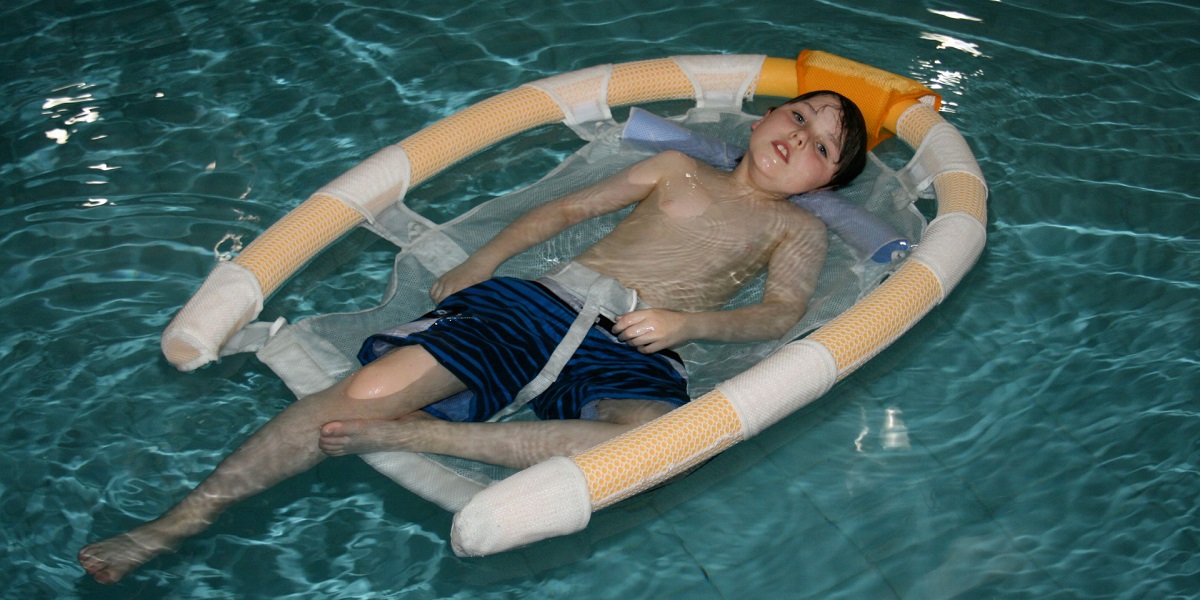Slings are designed to safely lift and move children who have difficulty moving themselves.
Specifiying the right sling can be very difficult as the child may have complex needs. Our expert sling assessors can assist in joint assessments, and help in choosing the correct sling from a variety of shapes and sizes according to the needs of the child.
Contact us to find out more or to arrange a FREE assessment
The nature of every sling will be determined by its four main properties:
1. Fixing - how it's attached to the hoist
2. Shape
3. Size
4. Material

Clip Fixing Slings have a safety "Click-on Click-off" action, which ensures that a physical click is heard as the sling is attached to the spreader bar. Moving parts are internal to the sling for greater durability. This type of sling is common in a hospital setting.
Clip Fixing
Loop Fixing Slings are more common and are compatible with 'coat hanger' hoists. They come with multiple, colour-coded, loops of differing lengths, which provides greater flexibility for positioning.
Loop Fixing
The shape of the sling is determined by the purpose of the sling eg general purpose slings, hammock slings, amputee slings, toilet access slings etc (see below for more detail).
Paediatric slings will cater for a wide range of sizes, but in some cases the child's proportions or posture will be unusual and then tailor-made (bespoke) slings may need to be prescribed.
The right choice of material can be crucial. For instance, in situ slings, which wto be made of 'breathable' material.ill be in contact with the skin for long periods, have
These are suitable for children with limited mobility who require full support during transfers. They provide support for the body and legs (and, if specified, the head). Our range includes a variety of designs with different fixings, shapes, sizes and material, each suited to specific users. These include:
These are a type of general purpose sling designed to minimise any pressure from the slings, for instance by having recessed seams. The material must be breathable to reduce the risk of skin damage. This allows them to be left in place for longer periods after the child has been moved to a chair or wheelchair. These slings can be specified in either straight-leg or deluxe leg configurations, depending on needs.
Recline slings are shaped like a hammock and provide closed leg full body support for the head, neck, and back on transfer. They are suitable for children with limited mobility who require support in these areas.
The Tinkham Sling is shaped to provide addtional support for children who have difficulty maintaining body control
The Tinkham Sling is shaped to provide addtional support for children who have difficulty maintaining body control
Toilet access slings (also sometimes called Dress / Easy Access slings) help with toileting and are designed with extra access for hygiene purposes. In general, good upper body tone is required.
Standing slings for standing aids or standing hoists: these are designed for lifting to a standing position. They are often used for children who can bear weight but require assistance with balance and stability.
Some children may need something different from a standard sling. Working in collaboration with healthcare professionals we can provide advice and guidance and then send a technician to carry out a detailed on site assessment, including measurements. Once the clinical assessment is completed we can arrange to create a customised solution, with the appropriate shape and size, using the right fabrics.

Our range of specialist products can be used in rehabiliation and to faciliate mobiity and travel. These include:
• Rachel Harness
• Jolly Jumper
• Walk assist jackets
• Floatation Slings
• Travel-lite
This light-weight mesh jacket harness is designed to encourage confidence and help promote independence. It can be worn for extended periods and can reduce handling.
Some weight bearing ability is recommended.

This supportive harness can help improve standing tolerance and transfers. It helps rehabilitation and in promoting inclusion in school and family activities.
It can be used with either an overhead or mobile hoist and is easy as it has only two straps attached to the top of the head support.

This is designed to assist a child with an unstable gait and is ideal for children using a walking stick or frame.
The assistant stands behind or at the sides and is able to provide some postural support using the handles, without grasping the child or their clothing.
The jacket is easy to put on, with zip fastening and side zips to allow expansion for bulky clothing.

This versatile dual-purpose sling folds up into its own bag making it ideal for days out or travelling.
It can be used both as a manual or hoistable sling (hoist tapes can be tucked neatly away when used as a manual sling).
The sides draw up to create a cocooning effect. There are divided or hammock leg options.
 CROPPED 1000x1000.jpg)

Access our webform - this will guide you through sending us the basic information we'll need to advise you on choosing the right sling.
Or, contact us directly: assist@fortunambach.com or 020 8805 2020
We stock a wide range of products, with over 1000 lines available in the showroom.
Come and TRY out the products to see what suits your needs.
Our friendly highly-trained staff will help you make a choice which is right for you.
Copyright © 2024 Fortuna Mobility | All rights reserved.